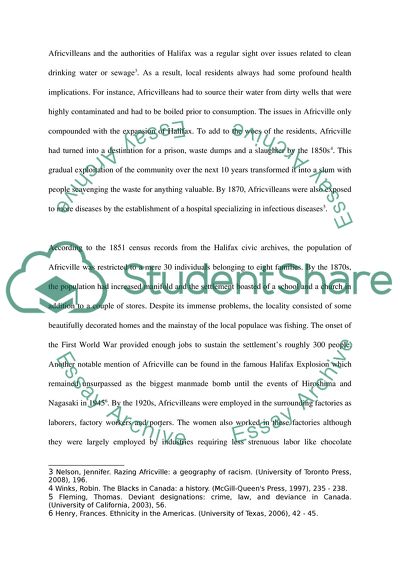Cite this document
(Ethnic Displacement of Africville Case Study Example | Topics and Well Written Essays - 3500 words, n.d.)
Ethnic Displacement of Africville Case Study Example | Topics and Well Written Essays - 3500 words. https://studentshare.org/history/1755350-the-125-year-old-canadian-community-that-was-bulldozed-in-the-1960s-africville
Ethnic Displacement of Africville Case Study Example | Topics and Well Written Essays - 3500 words. https://studentshare.org/history/1755350-the-125-year-old-canadian-community-that-was-bulldozed-in-the-1960s-africville
(Ethnic Displacement of Africville Case Study Example | Topics and Well Written Essays - 3500 Words)
Ethnic Displacement of Africville Case Study Example | Topics and Well Written Essays - 3500 Words. https://studentshare.org/history/1755350-the-125-year-old-canadian-community-that-was-bulldozed-in-the-1960s-africville.
Ethnic Displacement of Africville Case Study Example | Topics and Well Written Essays - 3500 Words. https://studentshare.org/history/1755350-the-125-year-old-canadian-community-that-was-bulldozed-in-the-1960s-africville.
“Ethnic Displacement of Africville Case Study Example | Topics and Well Written Essays - 3500 Words”. https://studentshare.org/history/1755350-the-125-year-old-canadian-community-that-was-bulldozed-in-the-1960s-africville.


